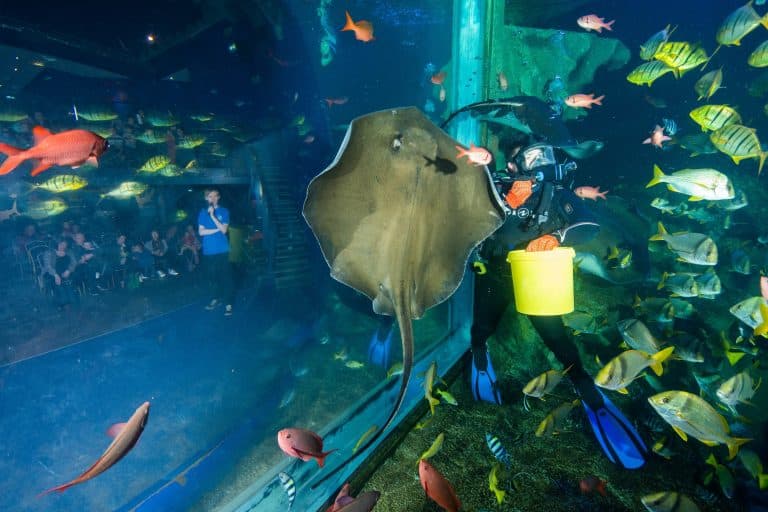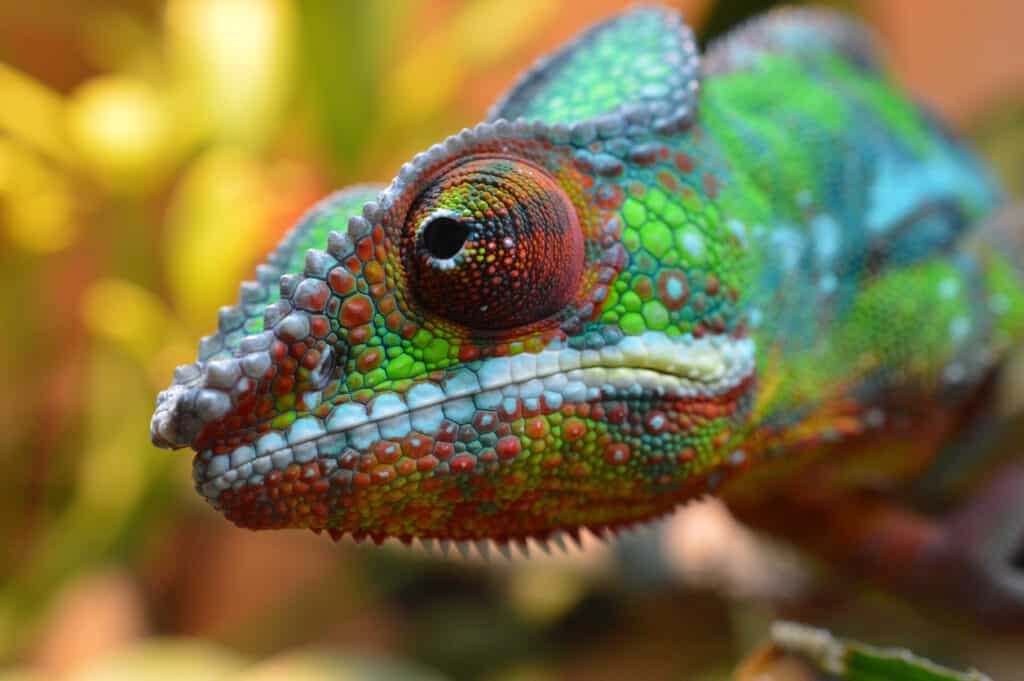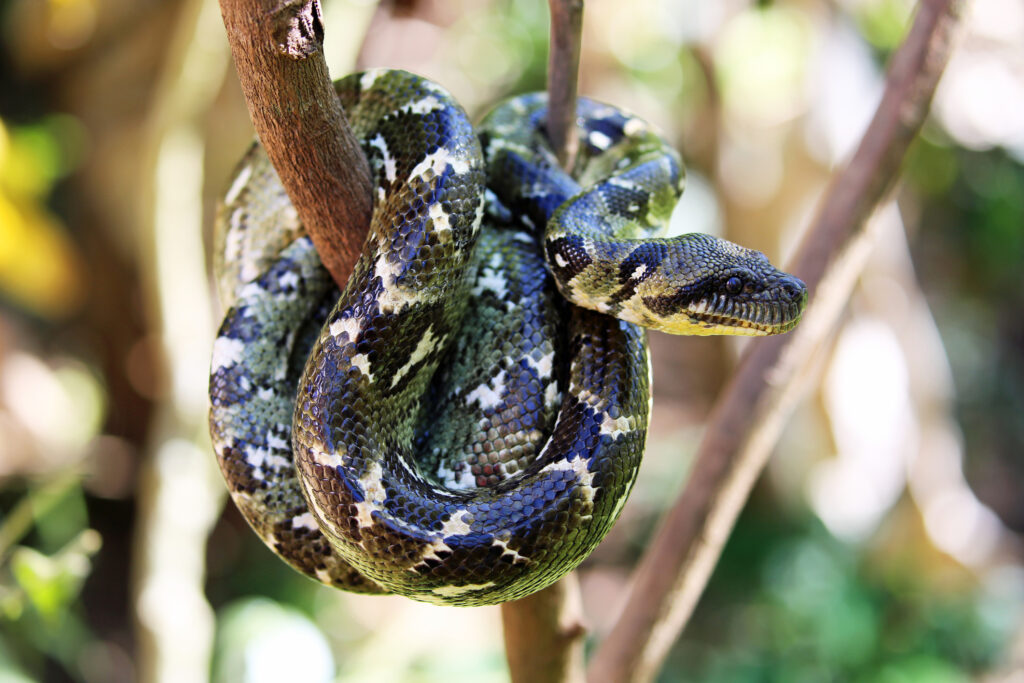Crocodile vs Caiman vs Alligator
Have you ever found it challenging to distinguish one species from another? This can be especially tough when they share so many similarities like crocodiles, caimans and alligators. Even though each one has its own unique characteristics and behaviours, they fall under the same category and share plenty of similarities.
If you’ve ever mistakenly identified a crocodile as an alligator, or a caiman as a crocodile, this guide should help clear up the similarities and differences so you can tell them apart!
What is a crocodile, caiman and alligator?
Crocodiles, caimans and alligators are all members of the order Crocodilia, which has been around for over 95 million years. That means they were walking around amongst the dinosaurs in the Late Cretaceous Period! The creatures in this order are classified as large, predatory, semi-aquatic reptiles.
But where they differ is their families, with crocodiles belonging to the Crocodylidae family, and caimans and alligators belonging to the Alligatoridae family.
Key differences and similarities between crocodiles, alligators and caimans
From habitats to lifecycles, appearance and features, let’s explore some of the major similarities and differences between these three creatures.
Number of species
Within the Crocodylidae family, there are 26 species of crocodiles in the world. Examples include the estuarine crocodile (Crocodylus porosus) – the largest reptile in the world! And the Nile crocodile (Crocodylus niloticus) native to southern and eastern Africa, and Madagascar.
Caimans and alligators both belong to the Alligatoridae family. There are 6 species of caiman, including the broad-snouted caiman (Caiman latirostris) found in South America, and the spectacled caiman (Caiman crocodilus) with its distinctive spectacle-like ridge between its eyes.
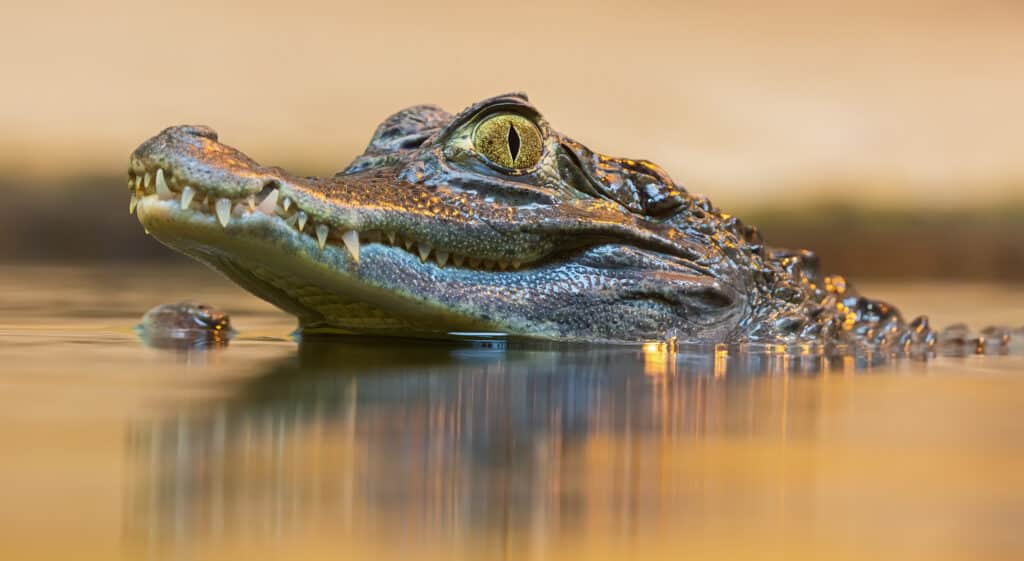
Alligators have the fewest variation in species, with only 2 in the world. The Chinese alligator, and the American alligator, which is the larger of the two. As the names suggests, they’re native to these parts of the world.
Typical habitat
As semi-aquatic reptiles, each of these creatures can dip in and out of temperate aquatic habitats. However, there are some differences in the types of water habitats they live in, along with their distribution around the world.
Crocodiles spend a good chunk of their time in freshwater habitats such as rivers, lakes, wetlands and sometimes in brackish water and saltwater. They’re fairly widespread around the world’s regions, with most living in Africa, Asia, North America, and Australia.
Caimans also stick to freshwater habitats like slow-moving rivers, lakes and streams, although some venture into flooded savannah and wetland areas. The biggest difference with Caiman is that they’re mostly only native to Central, North and South America. Although some can be found lurking in the waters around Africa.
While some alligators spend their days dipping into slow-moving freshwater rivers, they can also live in swamps, marshes, lakes and even saltwater habitats. However, they can only tolerate salt water for short periods because they lack salt glands.
Predators
Crocodiles, Alligators and Caiman mostly share the same predators, with humans being the main threat. As youngsters, they can sometimes be vulnerable to birds, raccoons and other mammals.
Key appearance features
So now we know that they have different habitats and numbers of species, but how can you actually tell them apart based on appearance?
The first tell-tale difference to look out for is the shape and size of the snout. Caimans for example, have long and pointy snouts, while an alligator’s snout forms a U-shape, and a crocodile’s is typically V-shaped. Particularly with crocodiles, you’ll notice many have an overbite rather than the upper and lower jaw lining up like it does for caimans and alligators.
As reptiles, all three have scales. Although, the colour and pattern of these can differ between individual species. For example, alligator scales are smaller and more uniform than crocodile scales.
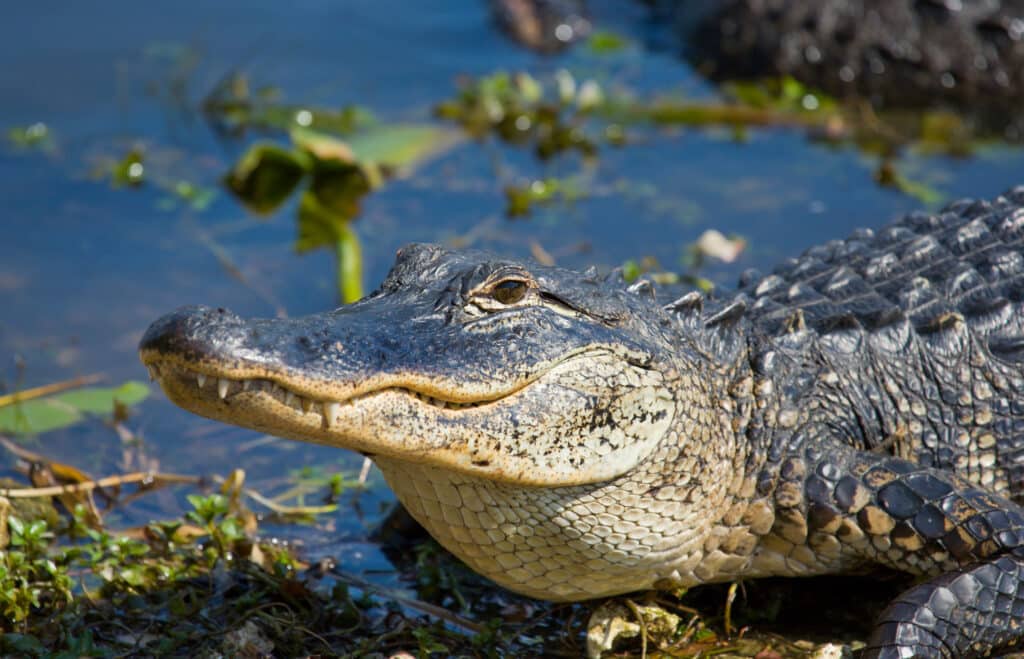
Size and weight
Another big difference is their size and weight which you can see below…
Average size:
- Alligator: Up to 4m
- Crocodile: Up to 5m
- Caiman: 1-4m
Average weight:
- Alligator: 500-600 pounds
- Crocodile: 2,400 pounds
- Caiman: 1,000 pounds
Within each family, there are still huge variations in size and weight. For instance, the smallest caiman species, the Cuvier’s dwarf caiman, only grows up to 1.5m. Chinese alligators aren’t much bigger, with an average size of just 1.5-2.1m.
In addition to size, jaw power also sets crocodiles, alligators and caiman apart from each other. The crocodile has the strongest bite at 7,700 pounds/feet – stronger than the bite of great white shark! Meanwhile, alligators have a bite force of 2,200 pounds/feet, and as the smallest of the three, it’s no surprise that the caiman’s bite force is the lowest at just 420 pounds/feet. But don’t be fooled – that’s still pretty strong!
Diet
Crocodiles, caimans and alligators are all carnivorous apex predators, although they each have slightly different diets depending on their habitats.
Alligators feed on a wide range of prey, from turtles and panthers to birds and deer. Caimans share a similar diet, feeding mostly on piranha, catfish, birds and turtles. Their hunting methods are also similar as they both use the cover of the bushes and hunt during the night.
Crocodiles, on the other hand, often set their sights on smaller creatures such as insects. Although saltwater crocodiles are known to feed on larger mammals if given the chance.
Lifecycle – reproduction and lifespan
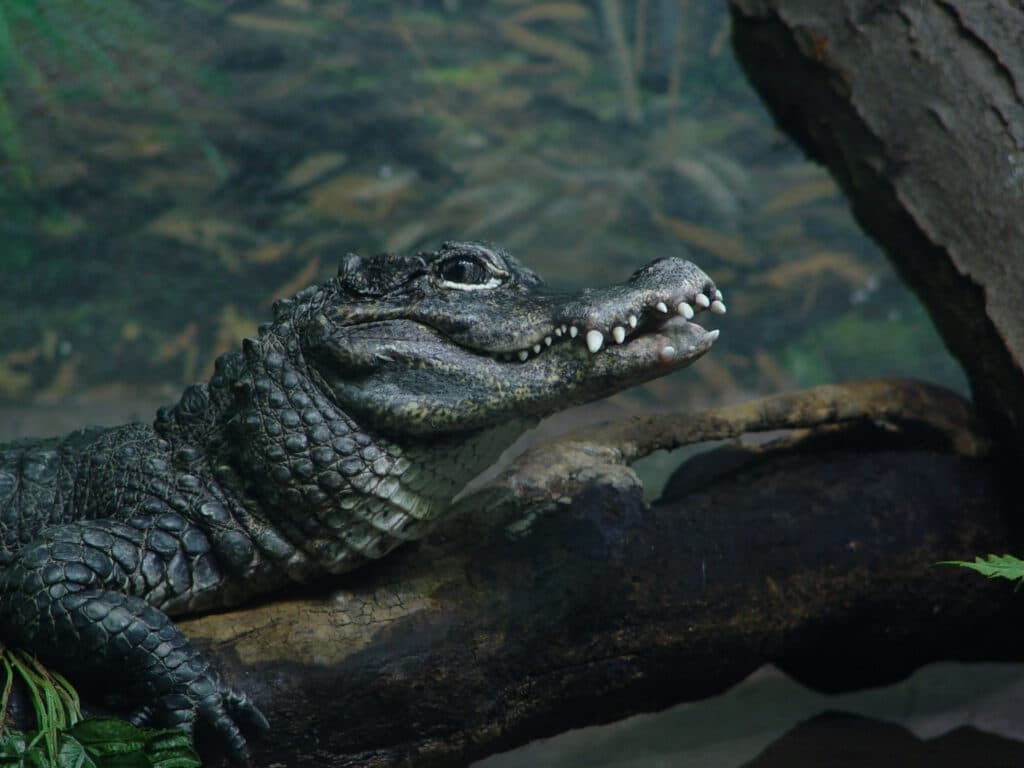
All three of these scaly creatures only breed and mate once each year, albeit at slightly different times of year. American alligators tend to breed when the weather is warmest, between April and June. The females are pregnant for just under 70 days and the eggs hatch within 2 months, leaving each female with around 38 offspring.
Meanwhile, female caimans lay 10 to 50 eggs during July and August, hatching just six weeks later.
Crocodiles also mate during summertime. Females are pregnant for a few weeks and will then lay their eggs on raised sand banks to keep them safe until they hatch 10 weeks later.
In terms of lifespan, the crocodile tends to live longest at an average of 100 years in captivity. The alligator’s lifespan is in the middle, at around 80 years, while caimans have the shortest average lifespan at around 20-40 years.
Behaviours
Crocodiles, alligators and caimans are all apex predators, which means they often display aggressive behaviour. Crocodiles are the most aggressive of the three because they have a higher sensitivity to noise, thanks to having a domed pressure sensor on their scales. Alligators also have these sensors, but only in their jaws.
They each thrive in warmer climates, using the heat from the sun to regulate their body temperature. Another behaviour they all have in common is camouflaging in the shallow water to sneak up on prey. Some species within the families are better at this than others, with species like the black caiman being particularly adept at hiding. Alligator and caiman species can also hide in bushes, often hunting at night to avoid the threat of humans.
Think you could tell these reptiles apart now? We hope so!
Here at Blue Planet Aquarium, we have our very own Cuvier’s dwarf caiman in our Caiman Crocodiles Exhibit. Book your tickets today to see this caiman alongside plenty of other marine creatures!
